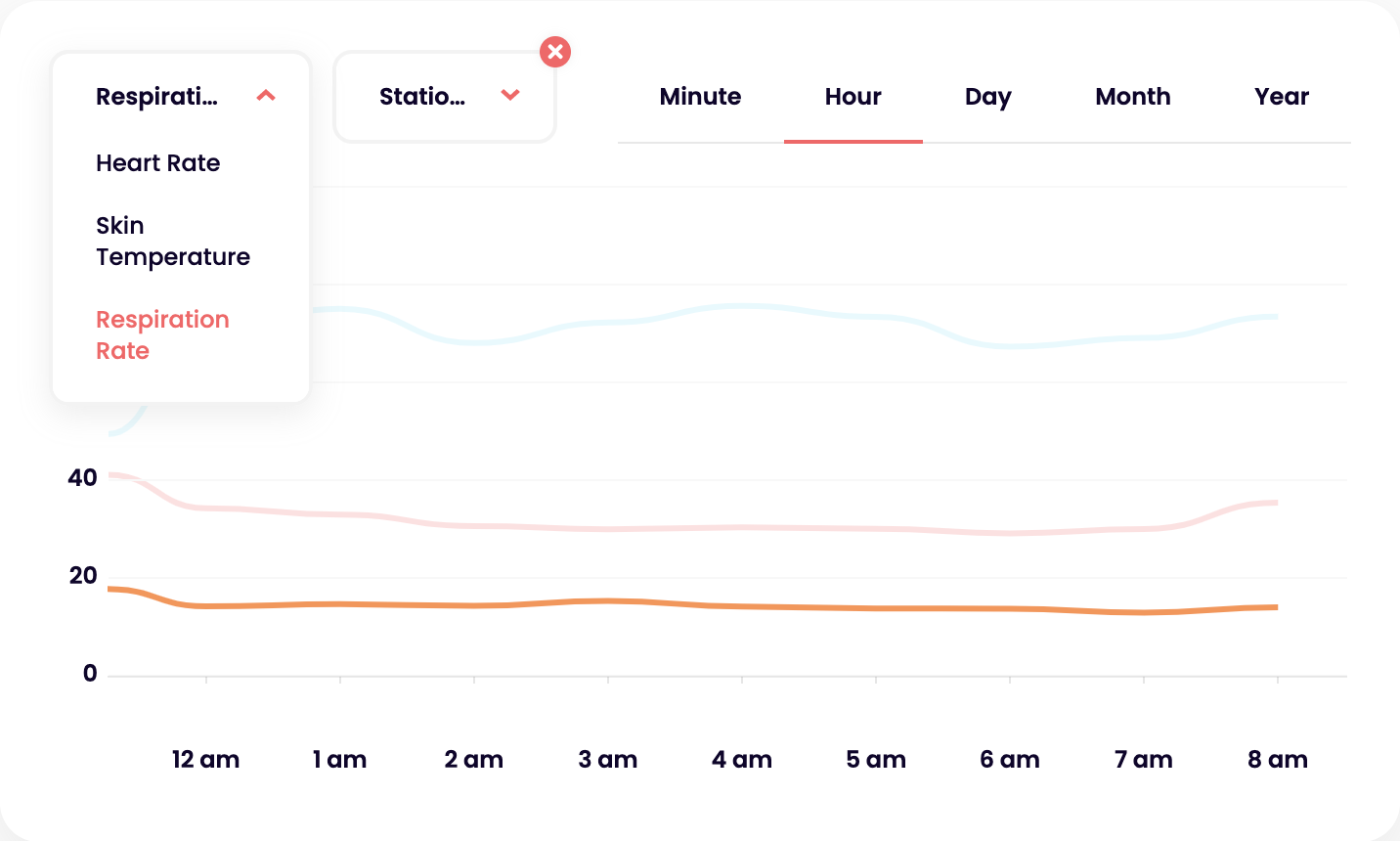PowrótTracking sleep respiratory rate
Zaktualizowano10 marca 2022
Respiratory rate measures the number of breaths per minute. Aidlab uses a transthoracic impedance measurement method to determine the respiratory rate. During respiration, the electrical properties of the chest tissues change, so by measuring the changes in thoracic impedance, the respiratory rhythm can be determined.
Preview your historical respiratory rate
- Login to your dashboard.
- Select Respiration Rate from the dropdown menu.

What can you tell from respiratory rate?
Increased respiratory rate can be a sign of trouble. For this reason, respiratory rate is a useful metric because it makes it easy to spot sleeps in which “something was up.”
In a healthy individual, it is normal for daily respiratory rate to fluctuate based on what we are doing and therefore what our acute need is for oxygen. Exercising is a great example–we breathe harder and faster when running than when standing still because while running our need for energy, and therefore oxygen, is higher.
Because variation within a day is more dramatically varied by activity level than it is by acute changes in efficiency, measuring respiratory rate throughout the day provides less insight into efficiency than does measuring respiratory rate during sleep. Since our need for oxygen is roughly constant from night to night (assuming the oxygen quality of the air is the same), you would expect respiratory rate to be the same. Therefore, when – as in the case study provided above – we see a sudden increase in sleeping respiratory rate, it is reasonable to consider changes to respiratory efficiency rather than energy need.
Things you should know
- Aidlab cannot detect sleep disorders (including sleep apnea). If you ever experience breath shortness symptoms, or what you think is a sleep apnea, call emergency services immediately.
- Do not change your medication without talking to your doctor.
